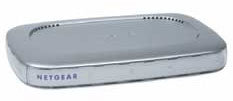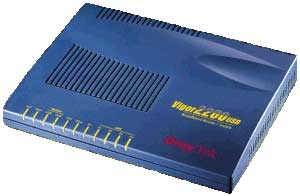Author: Joseph Moran
Review Date: 1/21/2003

Model Number: XA601 ($79)
Pros
- Excellent performance
- Thoughtful, attractive design
Cons
- None
While the no-wires convenience and higher performance (with some varieties) of WLANs would seem to obviate the need for powerline-based networking devices, HomePlug networks still make a lot of sense in certain situations, particularly in cases when the device you’re networking doesn’t need to move around (i.e. a desktop computer or a video game console).
Additionally, WLANs can have limited range, so if your house is large or has many sources of interference, a wireless signal may not reach everywhere you want it to. In these cases, networking your most distant computers with a Homeplug device can be easier and cheaper than trying to boost the wireless signal via more powerful directional antennas.
Already a major player in WLAN technology, Netgear is also staking its claim in the HomePlug network adapter market. Its new offerings in this arena are the XE602, which sports an Ethernet interface, and the XA601, which connects via USB.
When it comes to physical design and construction, the XE602 and XA601 distinguish themselves from many of their competitors, and it’s immediately clear that Netgear spent some time on the external features and functionality of the product.
The case for each device is a silver, low-profile rectangle with rounded corners. The rear of the units sport connectors for the power cord and Ethernet or USB, depending on the model.
A rubber ring at the bottom of the unit ensures the chassis stays on solid footing on your desk. Netgear also includes a rather ingenious stand that lets you set up the device in a space-saving vertical orientation. Wall-mounting holes are on the bottom of the unit, and the mounting hardware is included, along with the requisite straight-through CAT5 or USB cable.
A novel design cue is that the indicator lights are multicolored, widely spaced, and iconic (rather than simply labeled), so you can easily discern the status of the unit from a few feet away.
Because the Netgear products contain the same Homeplug chipset as the Iogear GHPU01, it shouldn’t come as a surprise that they utilize the same configuration software — a Windows-based utility that initializes the unit and lets you specify a password used to encrypt data between units.
Installation of the Netgear adapters was quick and uneventful. I ran the software, selected a common password for each unit, and, after first addressing the prompt to reboot, my Homeplug network was up and running.
To test performance I linked two notebooks using XE602 units. The computers were several rooms and about 40 feet apart on the same floor, plugged directly into wall outlets rather than surge protectors. To determine whether or not there would be any performance with the USB-based units, I subsequently repeated the tests with the XA601.
The performance of the XE602 was hands-down the best performer of any of the latest generation HomePlug products I’ve worked with. Average TCP throughput was 5.8 Mbps and UDP throughput was 5 Mbps. Response time and streaming performance were also excellent. These results were well in excess of typical 2.4 GHz WLAN speeds and faster even than similar HomePlug products from Iogear and Phonex.
As far as the performance of the USB-based XA601, the TCP throughput numbers were roughly the same — in this case, 5.7 Mbps. UDP throughput and streaming performance, on the other hand, were significantly degraded compared to the Ethernet-based XE602 — turning in scores of 3.3 Mbps and 375 kbps, respectively.
When I contacted Netgear about this fairly large performance difference, they speculated that it was partially due to a TCP/IP over USB driver stack that was not optimized for UDP traffic, as well as the nature of UDP communication itself (no windowing or acknowledgement of packets). Suffice it to say, if you think you might want to do any streaming, opt for the XE602 Ethernet model.
All things considered, I must say that I think the Netgear products represent the best of the group of currently available HomePlug-based products. Price, performance, ease-of-use, and even design and aesthetics are all top notch. You’d be hard-pressed to find a better offering in this category.




